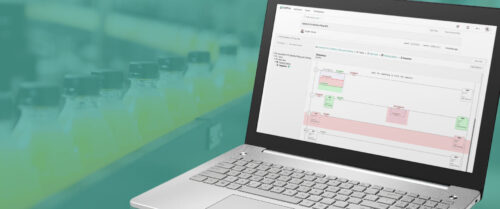Contemporary control rooms: Motiva Norco
Motiva’s central control room consolidates five separate control rooms into one and provides greater efficiencies. Emerson Process Management helped Shell and Saudi Refining Inc.
Learn more about control room design
Read: Transitioning from a control room to an operations center
Motiva Enterprises LLC is an oil refining, lubricants, and retail business operation owned by Shell and Saudi Refining Inc. Motiva’s Norco refinery produces about 7 million gallons of gasoline on a typical day for the city of New Orleans and nearby states, ranking it among the largest refineries in the world. Blending dynamically requires the refinery to be on spec with all blending components 24 x 7.
Several years ago, Norco management realized that the modernization of instrumentation and controls had not kept pace with other improvements to key units at the refinery. Refinery management initiated a modernization project to improve equipment reliability, avoid abnormal situations, speed response to upsets, and improve maintenance practices.
The project scope encompassed eight major process units , 6,000 I/O points, 636 control valves, and consolidated five separate control rooms into one centralized, integrated control room. The new central control room was a focal point of the project, says Jeff Funkhouser, operations manager. The design radiates from the operator outward, increasing his or her awareness. An overview layer is always present on the big wall screens, giving the operators a bird’s eye view of the entire plant. When an alarm occurs, operators can quickly drill down to get full details on the problem as well as the ability to take action to correct it.
New technology and training
Norco selected Emerson Process Management ‘s PlantWeb digital plant architecture with a network of intelligent field devices that provide advanced diagnostic information about themselves and the process. The architecture also includes an automation system, which is built for busses and supports F oundation Fieldbus and other bus technologies, and software that delivers information wherever it’s needed–control room, maintenance shop, engineering, and management offices.
Norco’s workforce, and changes in their work processes , has been the key to the success of the project, says Funkhouser. Motiva Norco management understood the need to invest in people in order to take full advantage of technology. For example, the new control room includes training simulators for each of the refinery’s units that were upgraded. Norco personnel have been trained by standard training courses and by using the products in the field.
The digital architecture includes digital automation systems and asset optimization software. Predictive capabilities have been improved so that maintenance can be performed proactively. Communications have been streamlined, which reduces response times. Maintenance direction and focus has been improved, empowering the workforce to own reliability.
Much more information is available from each unit than in the past, and new instrumentation greatly reduces the time required to diagnose problems. For example, in the past if an operator noticed a problem on a unit at night he would call an engineer at home and ask him to come into the plant to diagnose the problem. Two or three hours later the engineer would be at the site of the problem and could begin troubleshooting.
Today, the operator can drill down from the control room and obtain quite a detailed picture of the situation. He may be able to understand and solve the problem without the engineer’s input. If the engineer is needed, the operator can call him on the phone and the engineer can immediately log into the instrument to see the same readings that the operator is seeing. In most cases, the engineer can diagnose the problem without ever coming to the plant. The result is that the problem can be fixed in much less time. This helps avoid upsets.
Improvements in the processing units translate into overall operational excellence at Norco Refinery. In one typical example, a valve positioner had been physically damaged by construction work. Every control valve in the HCU has been completely outfitted with digital valve controllers (DVCs). The DVC has a feature called pressure control mode that essentially memorizes the pressure it has to put on the actuator to move the valve. The DVC also has sensors so if it loses travel feedback it will automatically switch over to pressure control mode and continue to control the process.could put a request in.
Once the re-instrumentation project was initiated, Norco was tracking amongst the best in class. “These achievements have resulted from the refinery’s strategic investment in reliable technology, the skills of our people and the development of a platform of work processes that run 24 hours a day, “says Funkhouser.
Note: Another version of this article was published in Hydrocarbon Processing , in October 2007.The information here is used by permission of Emerson .
– Edited by Renee Robbins , senior editor Control Engineering News Desk Register here .
Do you have experience and expertise with the topics mentioned in this content? You should consider contributing to our CFE Media editorial team and getting the recognition you and your company deserve. Click here to start this process.





